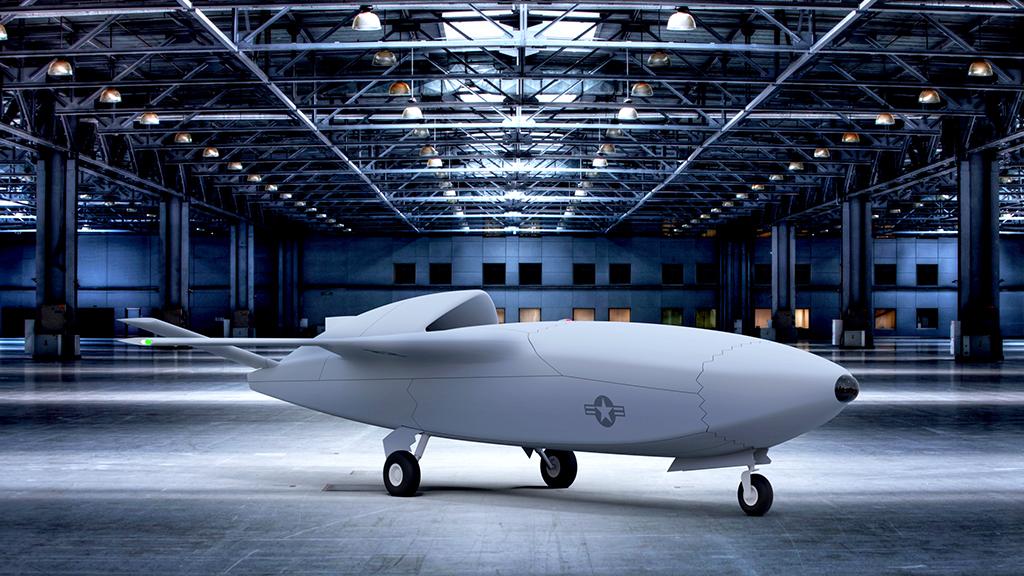
Leonardo flew its Falco Xplorer medium-altitude, long-endurance unmanned aircraft at Trapani Air Base in Italy on Jan. 15. The aircraft is designed to have an endurance of more than 24 hr. at 24,000 ft. with a maximum payload of 350 kg (770 lb.).

BAE Systems flew the first full-scale prototype PHASA-35 solar-powered high-altitude pseudo-satellite for the first time on Feb. 10 at Woomera in Australia. The 35-m-span (115-ft.) unmanned aircraft system is designed to stay aloft in the stratosphere for up to a year.

Boeing Australia rolled out the first prototype Airpower Teaming System “loyal wingman” unmanned aircraft on May 5, with the goal of flying the jet-powered UAV by year-end. Taxi tests began in October at an undisclosed location.

Leidos was selected in May to design and demonstrate the autonomy platform to be integrated into and control the U.S. Air Force’s future family of Skyborg unmanned aircraft systems. Fourteen companies are competing to design the air vehicles.

The NATO Alliance Ground Surveillance Force conducted the first flight of the Northrop Grumman RQ-4D Phoenix unmanned aircraft system on June 4 from Sigonella Air Base, Sicily. The fifth and final aircraft in the fleet arrived in November.

In July, under DARPA’s Gremlins program, Dynetics tested the complete system for the airborne launch and recovery of multiple unmanned aircraft. Dynetics flew the second Gremlins air vehicle in close formation with the recovery Lockheed Martin C-130 while captive-carry tests demonstrated the towed docking system.

The UK Defense Ministry signed a £65 million ($88 million) launch contract with General Atomics Aeronautical Systems for the first three of 16 Protector RG.1 versions of the MQ-9B Sky Guardian unmanned aircraft. The first Protector for the UK Royal Air Force made its maiden flight in September.

Israel Aerospace Industries claimed the world’s first landing of an unmanned aircraft at a major airport on Sept. 16. Its Heron flew into Tel Aviv’s Ben Gurion International alongside commercial aircraft.

HAPSMobile operated the first stratospheric flight of its AeroVironment-developed Sunglider high-altitude pseudo-satellite on Sept. 21 from Spaceport America in New Mexico. The 78-m-span (256-ft.) flying wing reached an altitude of 62,500 ft.

China’s EHang in September unveiled a dedicated unmanned logistics version of its EH216 electric vertical-takeoff-and-landing autonomous air taxi. The EH216L can carry up to 200 kg (440 lb.) in a cargo pod slung under a propulsion module.

Leonardo flew its Falco Xplorer medium-altitude, long-endurance unmanned aircraft at Trapani Air Base in Italy on Jan. 15. The aircraft is designed to have an endurance of more than 24 hr. at 24,000 ft. with a maximum payload of 350 kg (770 lb.).

BAE Systems flew the first full-scale prototype PHASA-35 solar-powered high-altitude pseudo-satellite for the first time on Feb. 10 at Woomera in Australia. The 35-m-span (115-ft.) unmanned aircraft system is designed to stay aloft in the stratosphere for up to a year.

Boeing Australia rolled out the first prototype Airpower Teaming System “loyal wingman” unmanned aircraft on May 5, with the goal of flying the jet-powered UAV by year-end. Taxi tests began in October at an undisclosed location.

Leidos was selected in May to design and demonstrate the autonomy platform to be integrated into and control the U.S. Air Force’s future family of Skyborg unmanned aircraft systems. Fourteen companies are competing to design the air vehicles.

The NATO Alliance Ground Surveillance Force conducted the first flight of the Northrop Grumman RQ-4D Phoenix unmanned aircraft system on June 4 from Sigonella Air Base, Sicily. The fifth and final aircraft in the fleet arrived in November.

In July, under DARPA’s Gremlins program, Dynetics tested the complete system for the airborne launch and recovery of multiple unmanned aircraft. Dynetics flew the second Gremlins air vehicle in close formation with the recovery Lockheed Martin C-130 while captive-carry tests demonstrated the towed docking system.

The UK Defense Ministry signed a £65 million ($88 million) launch contract with General Atomics Aeronautical Systems for the first three of 16 Protector RG.1 versions of the MQ-9B Sky Guardian unmanned aircraft. The first Protector for the UK Royal Air Force made its maiden flight in September.

Israel Aerospace Industries claimed the world’s first landing of an unmanned aircraft at a major airport on Sept. 16. Its Heron flew into Tel Aviv’s Ben Gurion International alongside commercial aircraft.

HAPSMobile operated the first stratospheric flight of its AeroVironment-developed Sunglider high-altitude pseudo-satellite on Sept. 21 from Spaceport America in New Mexico. The 78-m-span (256-ft.) flying wing reached an altitude of 62,500 ft.

China’s EHang in September unveiled a dedicated unmanned logistics version of its EH216 electric vertical-takeoff-and-landing autonomous air taxi. The EH216L can carry up to 200 kg (440 lb.) in a cargo pod slung under a propulsion module.
From loyal wingmen designed to cooperate with manned combat aircraft to stratospheric platforms intended to beam the internet to remote areas, unmanned aircraft technology continued its advances in 2020.










